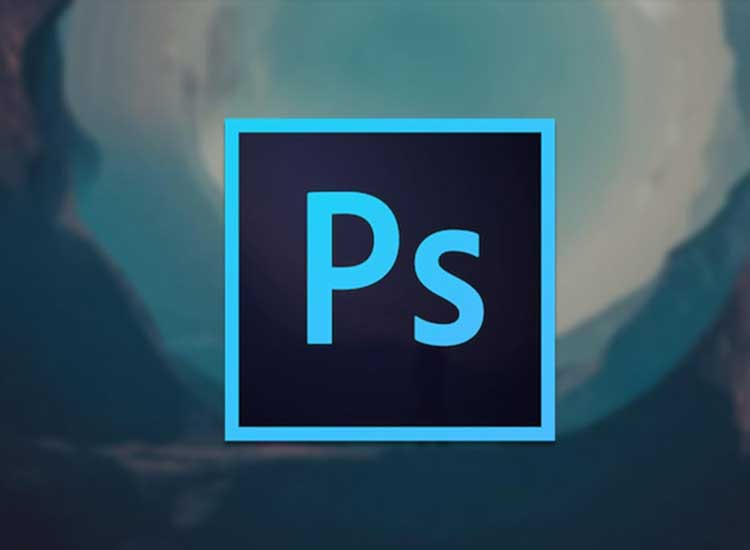History of Adobe Photoshop – Maybe we have heard the word Photoshop from someone who saw an image or photo that looked strange or odd and seemed impossible, because this application developed by Adobe is popular for its ability to manipulate photos. But we need to know that Adobe is not the maker of the Photoshop application. The original creators of the Photoshop application were 2 brothers, namely Thomas Knoll and John Knoll. However, the main initiator was Thomas Knoll. Thomas Knoll was a PhD student at the University of Michigan in 1987. He wrote a program on the Macintosh Plus to display a Grayscale image on a monochrome screen, the program was called Display.
At that time, Windows OS had not yet looked at the program created by Thomas Knoll called Display. His brother, John Knoll, who was an employee at Industrial Light & Magic was interested in what Thomas Knoll was doing and he suggested making it a full-fledged image editing program. To be more serious about working on the program, Thomas took 6 months of study leave and invited John to work together to sell this application more professionally. Along the way, they were rejected and their program was deemed unfit to sell. Learning from their failure, they continued to develop the “Display” program. Then they discovered an innovative method which later became known as ‘Plug-Ins’. Precisely a feature to align “tones”, “hue & saturation”, as well as several other image balance controls.
As the days go by, their program continues to grow. Based on John Knoll’s idea, the Display application was upgraded and renamed ImagePro. Later in 1988, Thomas changed the name of the program to Photoshop and worked for a short time with scanner manufacturer Barneyscan to distribute copies of the program with slide scanners, a total of about 200 copies of Photoshop were shipped.
During that time, John traveled to Silicon Valley in California and gave demonstrations of the program to engineers at Apple Computer Inc. and Russell Brown, art director at Adobe. Both demonstrations were successful and Adobe decided to purchase a license to distribute the program in September 1988. Since then, Adobe Photoshop was born. John worked on plug-ins in California, while Thomas remained in Ann Arbor to write program code. Then, in February 1990, Adobe released Adobe Photoshop 1.0. The program has the same capacity as a floppy disk (1.4 Mb) and is used on Mac OS. In 1992, Adobe Photoshop version 2.5 was launched, which was the first to be operated on Windows.
Early Versions of Photoshop
In September 1989, everything changed for Photoshop when Adobe bought it. A year later, on February 1, 1990, Photoshop 1.0 was released. That includes digital color editing and retouching. It is dedicated for use in high-end platforms like SciTex and costs $300 for basic photo retouching. Photoshop improved its features as defined for version 2.0. And so it was, on June 1, 1990 when Photoshop released its second version adding Paths, CMYK colors and the Pen tool. We attribute most of Pena’s tools to a guy named Mark Hamburg. Version 2.5 was then released in November as it was intended for the first release of Windows OS. Photoshop also added palettes in this version. In 1994, Photoshop 3.0 was released. This version now includes layers. This saves the judgment of many designers who like to add more complex nuances in their creations. Tom Knoll is the man who made all this possible.
It took two years for Photoshop to release version 4.0, which added adjustment layers and macros. Imagine if Photoshop developers had not thought of this, it would still take us a very long time to put watermarks on our photos.They make life easier. Additionally, 4.0 also debuted the user interface we all see today. On May 1, 1998, version 5.0 came out featuring its newest functions editable types and the ability to undo actions multiple times using the History palette. Area selection was also made easier with the addition of the magnetic lasso tool. A year later, 5.5 came out and added a Save for Web feature. (Thanks to 5.5 we can export PNG!)
When the new millennium arrived, Photoshop 6.0 came out. Vector shapes are featured in this version. The type tool is also revolutionized by adding a feature where you can directly type text without even defining a bounding box on it. Mix options are also added. Two years later came 7.0, which introduced a new file browser that allowed users to easily look through folders. Brushes are also added along with the patch tool.
Creative Suite
As Photoshop continues to develop, it comes with cooler features. It is marketed to a broad software package of which Photoshop is a leading brand called Creative Suite. It basically caters to all design needs, from graphic design to layout, photography to film. Photoshop CS (or Photoshop 8.0) was the first version to come out in 2003. It had a Counterfeit Deterrent System (CDS), which reused the duplication of paper currency. With the release of CS came scripts and languages. Layer grouping was also introduced in this version, making use of the program easier.
Meanwhile, in 2005, CS2 came out. This version adds a red-eye removal tool, and a vanishing point tool. Smart objects, which allow users to explode or crop images without losing quality, are also introduced. With the release of CS3 in 2007, speed was a big change. CS3 optimizes changes with tools. It makes navigating and using Photoshop faster and easier. Adobe Camera Raw and the Quick Selection Tool are also introduced.
In 2008, CS4 came out. It is clear that panning and zooming have become easier. Mask and Adjustment panels are also included which makes Masking easier. After two years, in 2010, Photoshop released CS5. It adds the Pupp Warp Tool, Bristle tips, Brush Mixer and Auto Lens correction. Masking is further improved. Finally, on May 7, 2012, CS6 came out with a very new and darker UI. It includes newer features such as autosave, patch and move tools, blur gallery and vector shapes with dotted or dotted strokes.
Creative Cloud
As you read this article, Adobe is in the process of fixing the software. One of the big innovations we have is the Creative Cloud series. This is a service from Adobe Systems that gives users access to the company’s design software. CC works on a software as a service model where users can ‘rent’ the use of the suite for an additional fee. It tries to eliminate piracy while minimizing companies’ expenses with their design software.
The CC version of Photoshop includes various changes. With CC, you are given more freedom, speed, and create ‘real life’ images. You can work directly with Behance and get feedback with your projects instantly. This latest Photoshop install uses features like Smart Sharpen, which converts low-resolution images to high-resolution ones. It also enables Camera Shake Reductions which allows users to restore sharpness in motion-blurred shots.
Conclusion
Looking back at Photoshop, we’ll see how a simple idea can grow into a useful and impactful tool. Without the Knoll display, we wouldn’t have our favorite software, right? This just proves that Photoshop, like us web designers, can evolve and get better. We’re constantly squashing our bugs, improving our tools (and sometimes redesigning our UI) to become better people. And, hopefully, like Photoshop, we will emerge as successful web designers.
Link Terkait :





